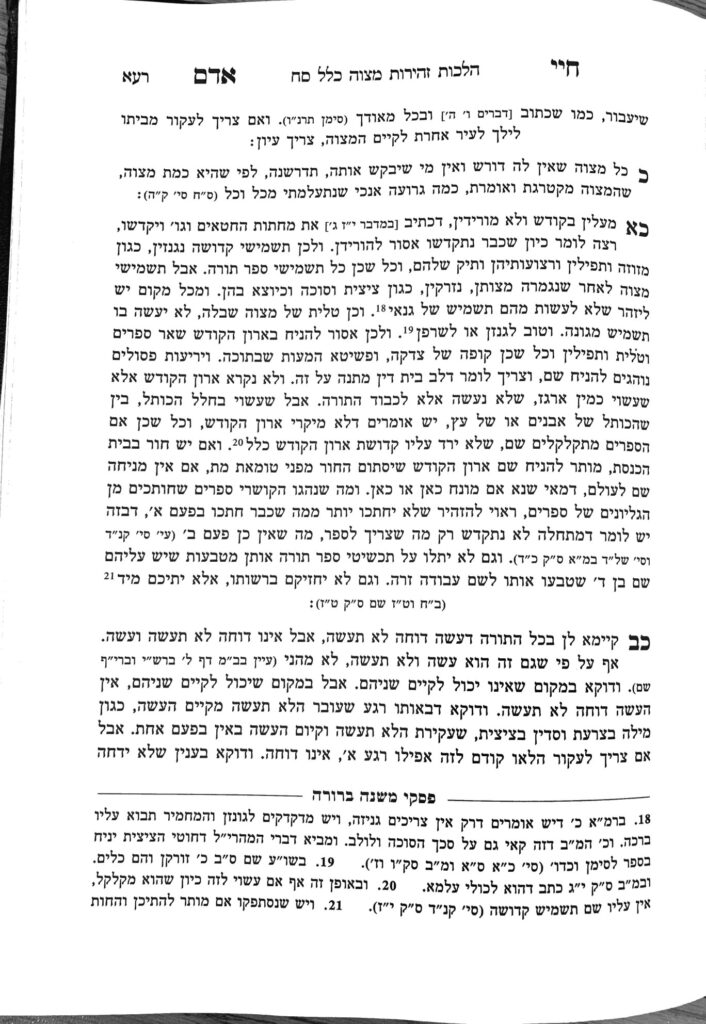We are continuing in siman 21, regarding the concept of ma’alin bakodesh. Today, we will discuss more examples of ma’alin bakodesh.
The Gemara in Shabbos brings a machlokes between Beis Shammai and Beis Hillel regarding the mehadrin min hamehadrin way to light Chanukah neiros. Beis Shammai holds that on the first night, a person lights eight candles, and lights one candle less every night. Beis Hillel holds that one begins with one candle, and adds a candle every night. Beis Shammai explains that we follow the parei hachag, the cows brought on Sukkos, which began with 13 cows on the first day and went down by one every following day. Beis Hillel holds that we begin with one candle and add, due to the concept of ma’alin bakodesh. In this case, there is not inherently more kedusha in adding more neiros, but the Gemara is borrowing the concept to teach that the Torah approach is to add, or at least not to take away, from a mitzvah.
The Gemara in Megillah discusses kriyas hatorah on Monday and Thursday. The Gemara says that there should be three aliyos, with a minimum of 10 pesukim lained between the three. (Sometimes it is necessary to lain more due to the proximity to the end of a paragraph, but 10 pesukim is the minimum.) The Gemara also says that each aliyah must contain at least 3 pesukim, so it comes out that in a minimum situation, two olim will lain three pesukim and one will lain four.
The Gemara discusses which oleh should receive the tenth pasuk. The Gemara brings a source about giving chashivus to the beginning of something and therefore having the first lain it. However, the Gemara suggests it may be more proper to have the third oleh lain it, due to the concept of ma’alin bakodesh. Again, we see that the concept is not being used in the context of adding more kedusha to the mitzvah, but rather in the context of simply adding more to the mitzvah, as we learned regarding Chanukah neiros.
These are examples of ma’alin bakodesh in which one is not adding or subtracting from the kedusha of a mitzvah, but rather in which one treats the mitzvah with greater respect, or performs the mitzvah with an element of addition that was not previously part of the mitzvah.
We see a final example from the Gemara in Brachos. The halacha is brought down that a person who is given a position of authority over the community cannot be removed from office without justification, because of the concept of ma’alin bakodesh. If there is a valid complaint which justifies their removal from office, they may be removed. Communal positions include dayan, nasi or rosh hakahal.
The sefer Shomer MItzvah suggests that we see five scenarios of application of the concept of ma’alin bakodesh:
- A person with a status, such as the kohen gadol or a nasi;
- The way mitzvah is performed, such as adding more neiros on Chanukah;
- Hechsher mitzvah or outside elements which improve the mitzvah, such as the tables by the lechem hapanim;
- Adding or removing kedusha to an item, such as making a tefillin shel yad into a shel rosh but not the other way around;
- Selling items of kedusha for another purpose, such as selling a torah to use the money to buy tefillin. We will discuss this last concept in the next shiur, be’ezras Hashem.
Summary
The are five scenarios of applications of the concept of ma’alin bakodesh:
- A person with a status;
- The way mitzvah is performed;
- Hechsher mitzvah or outside elements which improve the mitzvah;
- Adding or removing kedusha to an item;
- Selling items of kedusha for another purpose.



